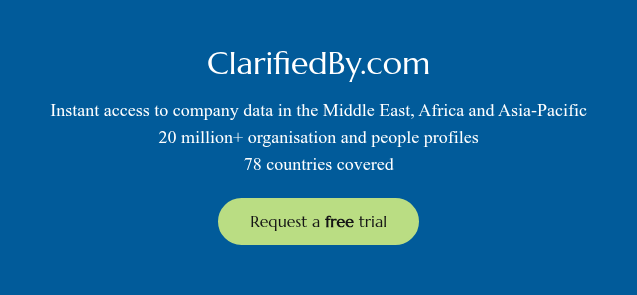Climate initiatives in the Gulf: the changing energy landscape in the run up to COP26
Read moreThe outlook for Carbon Capture and Storage in the Gulf states
In the second of our series of blogs and white papers covering clean energy initiatives across Africa and the wider Middle East, we focus on the uptake of Carbon Capture and Storage (CCS) in the Gulf states.
Carbon Capture and Storage (CCS) is seen as one of a number of crucial tools for addressing climate change. The technology has recently received renewed attention from the oil-rich Gulf states which are actively seeking a future for their hydrocarbon resources in a low-carbon world.
CCS and the 1.5°C goal
CCS involves capturing CO2 from industrial plants and storing it underground. This prevents the CO2 from reaching the atmosphere, where it would otherwise contribute to climate change. Under nearly all climate scenarios where global temperature rise is limited to 1.5°C above pre-industrial levels, some level of CCS will be needed. Pathways envisage CCS offsetting emissions from the hardest-to-decarbonise sectors such as steel, cement and aviation where it is very difficult to completely cut CO2 emissions. In the second half of this century, negative emissions technologies may also be needed as a result of overshooting the 1.5°C temperature limit due to international emission reduction efforts being too slow. CCS-related technologies such as Direct Air Capture and BECCS (bioenergy with carbon capture and storage) would be needed to bring the temperature back down.
Current limitations for CCS are that it is expensive and still largely at demonstration phase where it is not yet deployed at scale. There are also concerns that an overreliance on CCS may distract from the chief priority of rapidly removing fossil fuels from the global energy system. At present, around 40 million tonnes of CO2 is captured per year by 27 CCS facilities around the world1. To meet global climate targets however, this needs to scale up to billions of tonnes per year by 2050 across thousands of CCS facilities. Huge investments will be required to get there.
Importance for Gulf states
CCS is an attractive proposition for the hydrocarbon-rich Gulf states to invest in and champion. It promises to both reduce CO2 emissions and support the Gulf’s continued export of hydrocarbons over the coming decades. Their vision is for hydrocarbons to remain a central part of the global energy mix, and they are pushing for the top climate priority to be emissions reductions rather than fossil fuel use reductions. International adoption of CCS would enable the Gulf states to continue to export their oil and gas with the emissions being captured at the point of use. Domestic scale-up of CSS will be important for meeting their national CO2 reduction goals where the emissions from power plants, heavy industry and oil and gas production could be captured. It will also enable the development of blue hydrogen, the result of when natural gas is split into hydrogen and CO2 which is then captured (as opposed to green hydrogen that results from the splitting of water into hydrogen and oxygen, using renewable energy).
CCS facilities
At present, the GCC is home to three major CCS facilities, which together account for around 10% of global CO2 captured each year, at 3.7 million tonnes a year (Mtpa). Qatar Gas captures 2.1 Mtpa of CO2 from a gas liquefaction plant at Ras Laffan. It has plans to expand the facility’s capture rate to 5 Mtpa by 2025. Saudi Aramco’s Uthmaniyah Project captures 0.8 Mtpa of CO2 from a natural gas liquefaction plant which is then piped to the Ghawar oil field for enhanced oil recovery (EOR). ADNOC captures 0.8 Mtpa of CO2 at the Emirates Steel plant in Abu Dhabi as part of the Al Reyadah project. There are plans to expand the project’s capture rate to around 5 Mtpa by 2030. The region also has two CO2 utilisation facilities. SABIC is operating a CO2-to-chemicals plant in Jubail which captures 0.5 Mtpa of CO2 for use in the production of methanol, urea and liquified CO22. Qatar Fuel Additives Company captures 0.2 Mtpa of CO2 at a methanol production plant near Doha and uses the CO2 as a feedstock to boost methanol production.
CCS outlook
CCS activity is set to grow significantly in the Gulf over the coming decade. The Global CCS Institute estimates the region’s capture capacity could reach 60 Mtpa by 20353. There are a range of drivers supporting this. New political momentum provided by more ambitious national climate pledges and new regional climate initiatives are helping to intensify activity. Other key drivers include an increasing demand for CO2 for use in enhanced oil recovery, a desire to further reduce the carbon footprint of oil and gas production, the development of blue hydrogen for export, and decarbonising heavy industry.
Recent Saudi initiatives have signalled a strong intention to expand CCS. The country’s promotion of the circular carbon economy concept has CCS at its core and aims to boost international acceptance and support of the technology. The G20 endorsed the concept in late 2020. In October 2021, Saudi Arabia announced it would set up an investment fund to boost CCS technology as part of a US$10 billion package unveiled at the inaugural Middle East Green Initiative summit.
Novel technology pilot projects are also underway in the region. In April 2021, Swiss company Climeworks and Omani company 44.01 announced plans to develop a Direct Air Capture pilot project at Khazaen Economic City and use the CO2 in industry4. 44.01 is a new Omani start-up focused on storing CO2 in rocks using natural mineralisation processes5.
Charles Phillips is a researcher and consultant specialising in energy and climate change policy in the Middle East. He has an MPhil in Modern Middle Eastern Studies from the University of Oxford and a BA in International Relations from the University of Exeter. His work has included extended periods of in-country field research in Saudi Arabia, the UAE, Qatar, Turkey, Palestine, Egypt, Morocco, Kenya, Ghana, and Nigeria.
READ ALSO
- The expansion of renewables in North Africa
- The clean energy landscape in Sub-Saharan Africa
- Climate initiatives in the Gulf: the changing energy landscape in the run up to COP26
- Diligencia to focus on clean energy in the Middle East & Africa
- Accelerating renewable energy growth in Ghana
- GCCSI 2021 report
-
GW 08Sept21
-
GCCSI 2021 report
-
Sustainability 20May21
-
44.01 website

